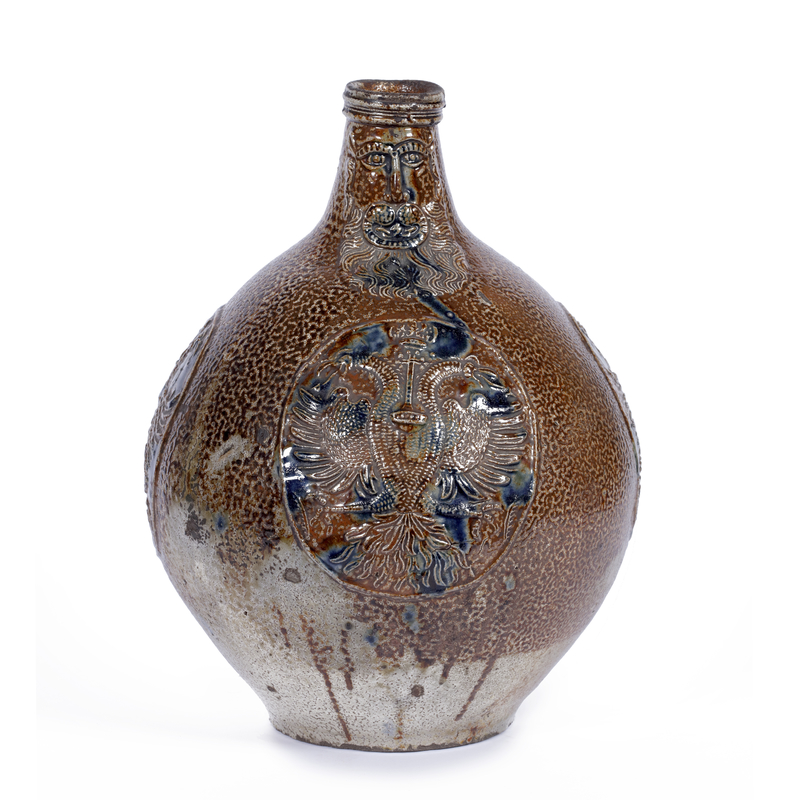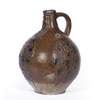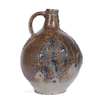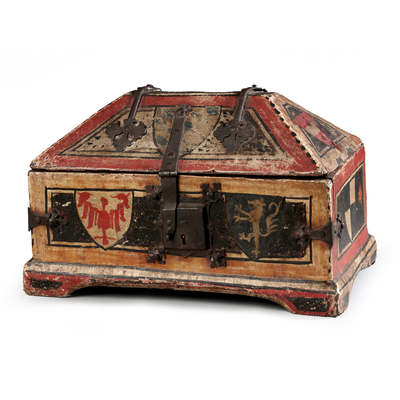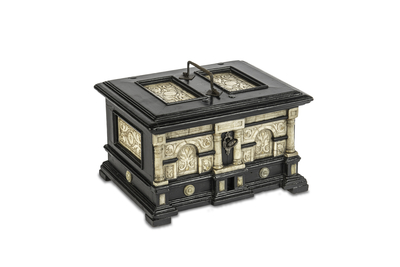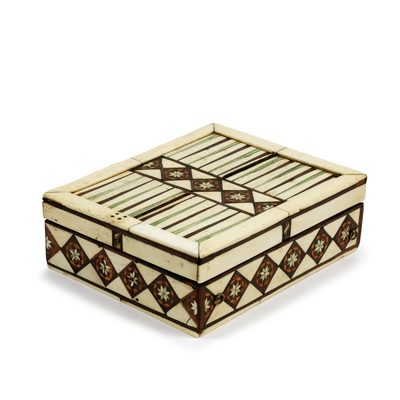German stoneware 'Bartmann' jug, dated 1601
Global shipping available
- Origin
- Cologne / Frechen
- Period
- Dated 1601
- Material
- Stoneware
- Height
- 36 cm
- Diameter
- 26 cm
- Literature
S. de Bodt, Gedateerde keramiek, gebruiksvoorwerpen met jaartal uit de collectie Van Beuningen - de Vriese, Rotterdam 1991, cat no. 37, 53, p. 42, 49.
C. van Hees, Baardmannen en puntneuzen - Vorm, gebruik en betekenis van gezichtskruiken 1500-1700, Zwolle 2002,pp. 23, 24, 48- 60
E. Klinge, Duits steengoed/ German stoneware, Rijksmuseum Amsterdam/ Waanders Zwolle, 1996, pp. 10-23.
G. Reineking-von Bock, Steinzeug, Kataloge des Kunstgewerbemuseums Köln; vol. 4, Keulen 1986, pp. 254 - 257.
K. Strauss & F. Aichele, Steinzeug / Battenberg Antiquitäten-Kataloge, Battenberg 1980, cat no. 37, 39, p. 57, 58.
I. Unger, Die Kunst des deutschen Steinzeugs: Collection Karl und Petra Amendt und der Krefelder Kunstmuseen, Krefeld 2013, cat. no. 22, 23, pp. 49 - 51.
Questions about this object?
Please use one of the contact options below:
Description
This beautifully decorated bartmannjug in mint condition is made in Cologne or Frechen and dated 1601. The characteristic grey earthenware is partly covered with a brown engobe. On the conical neck a smiling bearded man is depicted, with beard and moustache. Below the mask, on the globular belly, is an oval relief with a large double-headed eagle with the imperial apple and crown, and extended legs and wings. On both sides of the jug is an oval relief with the same two-headed imperial eagle as on the front, with the date '1601' next to the eagles' necks. In the centre of the oval is the coat of arms of the city of Cologne; three crowns symbolise the three wise men from the east, whose relics are kept in Cologne Cathedral, and the drops below, also seen as flames or tears, point to the legend of Ursula of Cologne, who, together with eleven thousand virgins, was murdered by the Huns in 383. Above the coat of arms are a cross and an imperial crown, next to the legs of the eagles are two smaller banners with standing lions. The decorations and the bearded man's mask are partly coloured blue with safer or cobalt. Coats of arms were a common element in the relief decoration of early modern stoneware. They often represent either the pottery production site or the potential distribution area, in order to be attractive to the inhabitants of towns where the vessels were marketed.
Given the drinking habits around 1600, it is very likely that alcoholic beverages such as beer or wine were served from this jug. The large size of the bearded pitcher, common since the end of the sixteenth century, indicates that it served as a storage jug and was used to pour liquor into smaller drinking cups. They regularly appear in paintings by Dutch Old Masters from the seventeenth century. The bearded pitcher usually stood on the ground or on a table, within reach of the drinker who served himself from the pitcher. People ordered wine or beer by the jug or pitcher; the pitchers served as a personal supply between the vessel and the glass. Smaller jugs from the first half of the 16th century with a wide neck, precursors of these larger jugs, were used for direct drinking.
Bartmannjugs were made in Germany between 1500 and 1770, originally in Cologne, but shortly afterwards in more places in the Rhineland, notably Cologne, Frechen, Langerwehe, Raeren and Westerwald. These areas had the perfect natural resources needed for the development of the pottery industry, such as fine, clean clay deposits for stoneware, dense forests for the kilns, and an abundance of salt to create the salt glaze. The colours of this beautiful bellarmine are a direct result of the clay used and the firing process. The grey-coloured base clay consists of the pure, fine-grained and silicate-rich clays found in the beds along the Rhine. This clay was optimal for stoneware: when fired at extremely high temperatures, around 1300 degrees Celsius, the clay did not deform or melt, but "sintered" (melted to a certain extent so that clay particles unite) to produce a hard, waterproof stoneware. The presence of 2% iron salts in the clay created the characteristic speckled effect. The warm brown colour is the result of metal oxides in the engobe. The potters dipped the unfired pot in the engobe or poured the engobe over it to embellish the colour of the baking. The transparent salt glaze was easily and efficiently obtained by adding moist sea salt to the kiln when the kiln temperature was at its highest. The chlorine in the salt evaporated in the heat and the sodium reacted chemically with the silica in the clay, producing an evenly glossy transparent glaze with an orange peel texture. As stoneware is waterproof in itself, glazing was a purely aesthetic choice. It was also during this salt glazing process that the bright blue splashes, of cobalt or sapphire, were added to the relief decorations. The relief decorations were made using a mould. The negative ceramic moulds were filled with a thin layer of fine clay. The clay paste decorations were attached to the neck or belly of the jug, after which it went into the kiln. Towards the end of the 15th century, the use of moulds made it possible for various potteries in Rhenish towns to produce quite detailed and elaborate decorations in a standardised way on products that were mass-produced in large workshops. The decorative motifs on the pottery show that the makers of the moulds must have been familiar with contemporary printmaking with decorative examples that were often the original models for the relief decorations.
Although many of these jugs were mass-produced, it is a rarity to find one in such well-preserved and unrestored condition today.
